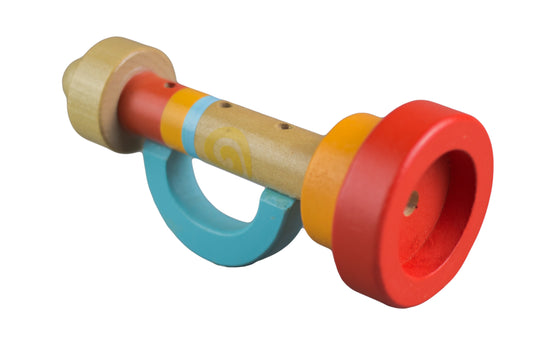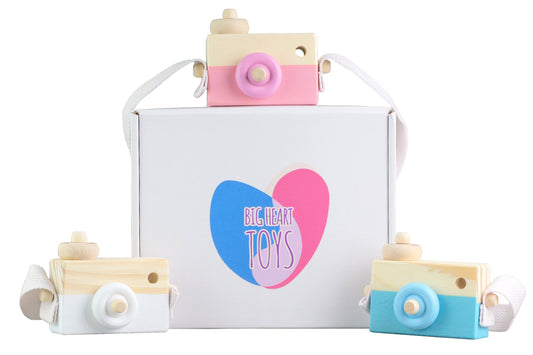We would love to imagine childhood as a happy, stress-free experience, but for many children, this is not always the case. New studies reveal that 9.6% of children were diagnosed with anxiety in 2020. As they grow, it’s our job as their parents to help them manage stress — both clinical anxiety and the general nervousness that can pop up.
Creating a stress management plan with a child helps them recognize their own stressors and know what to do when stressful situations arise. It allows them a feeling of control in overwhelming situations and gives them a practical way to calm down.
Basically, it’s the foundation for lifelong emotional regulation.
What Are Signs of Stress in Children?
Stress can occur in a magnitude of ways for many different reasons. Children experience stress just as adults do, but sometimes their stressors are less visible.
A few examples of signs of childhood stress include the following:
- Fatigue
- Stomach aches (without a medical reason)
- Overly emotional
- Fear
- Aggression/irritation
- Clinginess
- Anger
A feeling of uncertainty or instability may be a stress trigger for a child. Just imagine how you feel when going through a big move, career change, or dealing with a new life event. Children experience the same levels of stress when going through periods of change.
Overwhelming tasks and having too much on their plate can cause stress, as well. Struggling with schoolwork or sports may cause a child to feel overwhelmed and stressed.
Additionally, being overstimulated is a huge stressor in young children. The world around them is so big and busy that it’s easy to feel overwhelmed by it all. When kids feel overstimulated too frequently, it increases their stress levels.
When parents are stressed, their children might feel stressed, too. Kids look to their parents for a sense of security. When parents act calmly and like everything is fine, children are more inclined to believe the same thing. Children are keen observers: They see far more than adults give them credit for. Don’t forget to look after your own mental health too!
It is important to identify what is triggering a child’s stress to best make a stress management plan. If the trigger can be removed or decreased, this may be the first step of your plan.
Signs of Excessive Stress
Sometimes, the amount of stress a child is experiencing can start to be concerning. Look for signs of excessive stress to know how serious the problem is and better plan your stress management plan. If you notice any of the following, your child’s stress levels may be excessive:
- Recurring headaches
- Nightmares
- Changes in eating habits
- Not wanting to leave the house
- Bedwetting
If these things are occurring, it may be a sign to make your stress management plan sooner rather than later.
It’s time to tackle the stress.
Stress Management Plans: How To Get Started
What is a stress management plan, and how is it made?
Stress management plans are exactly as they sound: a plan of what to do when stress levels become too high. Ideally, this task can be completed anywhere at any time to help a child reduce their stress levels.
Breathing Exercises
One example of a stress management plan is a breathing exercise. Deep breathing helps to calm the central nervous system and soothe the body and mind.
There are many deep breathing exercises that are simple, quick, and easy to remember. Some involve counting, visualization, or rhythms. Choosing a breathing technique to practice ahead of time is key. It’s tricky even for adults to learn a new skill while under pressure; the same goes for children.
Pick some breathing exercises based on the child’s age and introduce them in calm, serene moments. Practice each technique, allowing your child to pick a favorite. Then, when a stressful situation arises, coach them through the relaxation process.
Positive Self-Talk
Positive talk or reciting a mantra can help, as well. Essentially, this is a soothing phrase that a child can repeat out loud or to themselves. These work best when the stressors are identified, so the mantra can be specific.
For example, if a child often gets overwhelmed by schoolwork, you may practice the phrase, “It’ll all get done, one step at a time.” You may even choose a humorous phrase with meaning, such as “How do you eat an elephant? One bite at a time!” Your child's personality and specific needs will determine how silly or serious the expression is.
Exercise
Exercise is often one of the most commonly used de-stressors. You can pick your child’s favorite exercise, like jumping jacks or push-ups, and have a set number of these to do when feeling stress come on.
This can be a little tricky at times, such as in the middle of class, so in this instance, it is also important to discuss appropriate times to do it.
Positive Imagery
Creating a positive visual image is a great way to subtly manage stress. This technique can go unnoticed by those around, but it can be very effective in the calming down process.
To choose a positive image, children may talk about a happy memory or a safe place to revisit in their minds in times of stress. It can be fictional or real, depending on the child’s imagination.
Journaling
Writing can be beneficial to older children seeking a therapeutic activity. Journaling is often shown to be a great forum to get feelings out. It helps a child process what they are feeling and consider the reasons why they feel that way.
This is possible with younger children as well, but it would probably include more drawings than words. It’s a fabulous introduction to the concept. For some extra help, you can provide journal prompts or encourage a free-write session.
Tie this activity to a positive association by making it a routine family project — modeling this behavior makes it seem like a fun activity, not homework.
Sensory Tables/Toys
Sensory items are an excellent way to put a child at ease, especially when dealing with overstimulation. A small sensory toy, sensory bin, or fidget and pop toys kit can go a long way to put a child’s body at ease and provide a sense of control.
Steps To Creating a Stress Management Plan
Keep It Unique
The secret ingredient to the best stress management plan is your child!
A stress management plan is something they should be a part of creating. Allow the child to be a part of the process and make decisions. This will help them be more self-aware and committed.
As adults, our job is to facilitate this process. We can offer ideas for stress management but encourage the child to make the final decision. After all, if something doesn’t work, it can easily be adjusted or rearranged.
The more they feel like they created their own plan, the more they will follow it and own their feelings.
Keep It Simple
We don’t want this plan to be overwhelming or hard to remember: Simplification is key. When creating the plan, focus on short, straightforward steps.
For example, maybe there are three simple steps: step away from the stressful situation, do ten jumping jacks, take three deep breaths, and return when you are calm again.
Once the plan is created, go over the steps frequently so that this can become natural. Say them, repeat them, and practice, practice, practice! The more normal this feels, the easier it will be to complete when a stressful situation arises.
After all, the middle of a stressful situation is the worst time to have to think and try to remember what you’re supposed to be doing. The more practice done ahead of time, the more successful this plan will be when the time comes.
Check-Ins
Once a plan is in place and being utilized, it’s important to check in every so often and ask your child how the plan is going. Is it still working to reduce stress? Should any changes be made? This reflection piece is crucial to provide time to self-monitor and adjust if need be.
Check in as necessary and make sure that the plan you’ve chosen still applies to the needs of your child.
Reflection: Is It Still Working?
Creating a stress management plan is a beneficial way to help children self-regulate. They can identify their feeling of stress and take the proper planned steps to feel more at ease. However, as they grow, the plan that has been developed may need to change.
It’s always a good idea to reflect with our children and ensure that their stress management plan is still the best pick for them. If they are following the plan carefully and still experiencing major feelings of stress, it may be time to reevaluate and choose a new plan.
This is not a one-size-fits-all type of plan. The great thing about stress management plans is that there are endless options, and they can be rethought at any time. Additionally, if the services are available, encourage your child to visit a therapist, school counselor, or other trusted adults in their life.
Continue the conversation! Maintaining an open space to discuss feelings and evaluate plans will create a feeling of ease, reassuring our children that we are there for them and willing to adjust when they need us to.
Sources
Stress Busting Activities for Young Children | Better Kid Care
Stress and Stress Management: Grown-Ups | Raising Children Network






